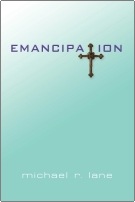

Recently-freed slaves crowd around, while in the background the Union army marches off victorious, in perfect formation. At his feet lie two soldiers: one Confederate, one Union. The central figure - a black man with arms upheld - is almost 11 feet tall. "The Freeing of the Slaves" adorns the north Reading Room wall of the UW Law Library on Bascom Hill.

But a striking, often-overlooked campus mural by John Steuart Curry tells a part of the story that's often forgotten. That would build a great constituency for reform as well.ĭon’t miss out on ET Prime stories! Get your daily dose of business updates on WhatsApp.With a sweep of his pen, Abraham Lincoln changed the lives of 4 million black Americans when he signed the Emancipation Proclamation that led to the 13th Amendment outlawing slavery in the U.S.

It is time some politician, at least, sought political capital in espousing the link between globalised growth and emancipation from oppressive, misogynic tradition. The greater economic diversification and urbanisation, the greater the erosion of tradition. The values of society are shaped not just by political choices, of course. This can change only when the top leadership makes it very clear where they stand when it comes to making a choice between modernity and democracy on the one hand and currying favour with oppressive custom on the other. Runof-the-mill politicians fear to take sides against custom, even when custom manifestly goes against the letter and spirit of the Constitution.

Even more critical is the missing political will to get the machinery of the state working on these issues. Judicial delay and systemic inertia act as hurdles in achieving this goal. The full force of the Indian state must be brought to bear to enforce the law. Every single one of these violent, indecent acts violates fundamental rights guaranteed by the Constitution and breaks laws.


 0 kommentar(er)
0 kommentar(er)
